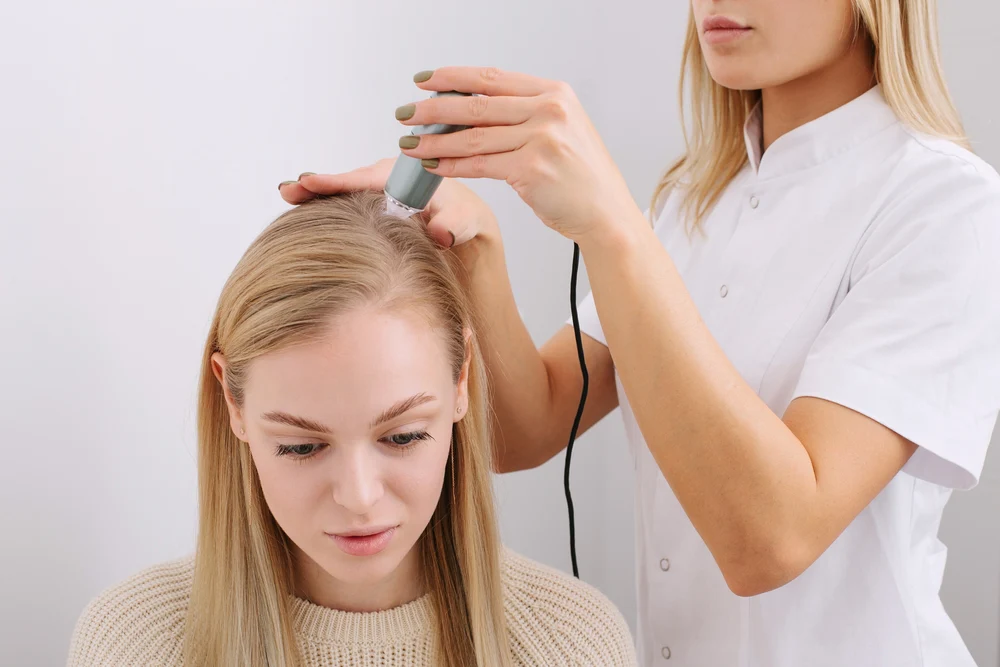Does the Best Trichologist for Bald Areas Suggest PRP?
Hair loss, especially in localized bald areas, can be distressing and impact self-confidence. Many individuals seek expert advice to explore effective treatments, and consulting the Best trichologist in Dubai can provide valuable insights into advanced solutions. One such treatment often recommended for hair restoration is Platelet-Rich Plasma (PRP) therapy. But is PRP truly the go-to solution for bald patches? Let’s delve deeper into its efficacy, process, and suitability for different hair loss conditions.
Understanding PRP Therapy for Hair Loss
PRP therapy is a non-surgical treatment that uses the patient’s own blood to stimulate hair growth. The procedure involves drawing a small amount of blood, processing it to concentrate platelets, and injecting the plasma into the scalp. Platelets contain growth factors that promote tissue repair and follicle regeneration, making PRP a promising option for hair restoration.
How PRP Works on Bald Areas?
The science behind PRP lies in its ability to rejuvenate dormant hair follicles. When injected into thinning or bald areas, growth factors in the plasma trigger cellular activity, improving blood supply to the follicles and extending the hair growth cycle. Studies suggest that PRP can increase hair density and thickness, particularly in cases of androgenetic alopecia or patchy hair loss.

Is PRP Effective for Bald Spots?
The effectiveness of PRP depends on the underlying cause of hair loss. While it shows significant results in early-stage androgenetic alopecia, its success in completely bald areas is more variable.
PRP for Early-Stage Hair Thinning
Patients with thinning hair or minor bald patches often respond well to PRP. The therapy can slow down hair loss, strengthen existing follicles, and encourage new growth when follicles are still viable. Multiple sessions are usually required for optimal results.
PRP for Advanced Baldness
For completely bald areas where follicles have been inactive for years, PRP may have limited effectiveness. Without active follicles, the growth factors have no foundation to stimulate. In such cases, combining PRP with other treatments may yield better outcomes.
What Do Trichologists Say About PRP?
Trichologists evaluate multiple factors before recommending PRP, including:
- Type of Hair Loss – PRP is most effective for pattern baldness and alopecia areata.
- Patient’s Age and Health – Younger patients with good blood circulation tend to respond better.
- Stage of Hair Loss – Early intervention increases success rates.
A qualified trichologist will assess scalp health, follicle status, and medical history before suggesting PRP.
The PRP Treatment Process
Step 1: Consultation and Assessment
A thorough scalp examination helps determine if PRP is suitable. Blood tests may be conducted to rule out deficiencies or conditions that could hinder results.
Step 2: Blood Draw and Centrifugation
A small blood sample is taken and spun in a centrifuge to separate platelet-rich plasma from other components.
Step 3: Scalp Injections
The concentrated plasma is injected into targeted areas using fine needles. The procedure is minimally invasive, with slight discomfort.
Step 4: Post-Treatment Care
Patients may experience mild redness or swelling, which subsides within hours. Trichologists usually recommend avoiding strenuous activity and sun exposure for a day or two.
Expected Results and Maintenance
Most patients require 3–6 sessions spaced a month apart for noticeable improvement. Maintenance treatments every 6–12 months help sustain results. Full effects become visible after 4–6 months as new hair cycles develop.
Alternative Treatments for Bald Areas
While PRP is effective for many, alternatives include:
- Minoxidil & Finasteride – FDA-approved medications for pattern baldness.
- Low-Level Laser Therapy (LLLT) – Stimulates follicles via light energy.
- Hair Transplant – Surgical relocation of hair follicles for permanent coverage.
A trichologist can guide patients toward the best option based on individual needs.
Conclusion
PRP therapy is a scientifically backed treatment for hair loss, particularly in early-stage thinning and patchy baldness. While it may not fully restore long-dormant follicles, it can significantly improve hair density when combined with other therapies. Consulting a trichologist ensures a personalized approach, maximizing the chances of successful hair restoration.
